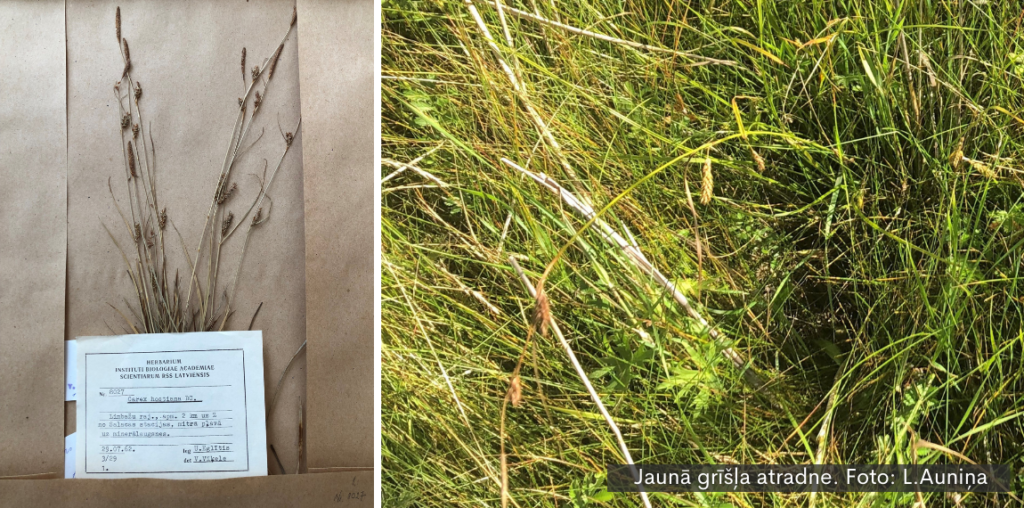The most interesting species finds in the field work season of 2022
The project's species experts are currently working on the preparation of species assessments, gathering information from a variety of data sources. There are species for which data is missing, so experts are also relying on field work to collect the missing data and update the available information.
During the field work, the project experts managed to observe very rare species that have not been seen for a long time, or were even detected in Latvia for the very first time.
A new mushroom species has been found

On September 24 of 2022, the Society of Mycologists of Latvia had the opportunity to visit Moricsala. There were many interesting finds, and the project expert I. Dāniele was there to witness them. Approaching one of the spruce trees surrounded by observers, project expert I. Dāniele immediately realized that this is the first time she has seen such a mushroom.
On the mossy, rotting soil, golden yellow-brown mushrooms were arranged in a small group. We also found out the first discoverer of this species - it turned out to be Ieva Rožlapa.
Due to the bright and unique appearance of the mushroom, it was not difficult to identify the species - it is a new species for Latvia, Chrysomphalina chrysophylla.
According to GBIF data, this species is found mainly in Europe and North America, also in some places in Asia. It is mainly found in boreal and hemiboreal zone, but it can sometimes also be found in warmer regions, mainly in wet spruce forests, on mossy slopes.
I. Dāniele admits that this species deserves evaluation and inclusion in the Red Book and the list of protected species. So far, only one deposit - so the species is very rare and even critically endangered (CR). Could a Data Deficiency (DD) be considered? Probably no more than many other rare species. The mushroom has a bright enough appearance for it to be discovered by other mushroom experts elsewhere in Latvia.
New and long-lost species have been found in Latvia
In the middle of the summer, we shared the news about the findings of the project expert and entomologist N.Savenkovs during field work. The expert had managed to identify a specimen of Sesia bembeciformis species.

The species has a secret lifestyle - it basically lives on the willows of various species. Some specimens have been collected and in the future they will complement the insect collection of the Latvian National Museum of Nature. This species is distinguished by the peculiarities of its life cycle - the larval stage lasts 3-4 years. The species lives in the stems of live plants and the larva feeds on the sap, but is not generally considered a pest.
Considering that the species had not been found in Latvia until now, it does not yet have an official name in Latvian. The appearance of the new species is also interesting - Sesia bembeciformis is a butterfly that looks like a hornet. Despite the appearance of the species, it is peaceful and cannot sting people.

However, Sesia bembeciformis was not the only species newly discovered in Latvia - at the beginning of July, in the vicinity of Krāslava, the project's expert N.Savenkovs managed to discover another new species for Latvia - Simplicia rectalis. We know relatively little about this species.
Several species of butterflies, which are considered very rare in Latvia, were also found during the field work.
After a 60-year break, a long-sought sedge has been found
After a 60-year break, a rare plant species, Carex distans, has been found in Latvia. It was found by the leading researcher of the Institute of Biology of the University of Latvia, Liene Auniņa, during the expeditions of the LIFE FOR SPECIES project in the 2022 vegetation season.

In 1962, the distant sedge was found in the grasslands around Ainaži, but now the species was found in natural, unimproved grassland in Kurzeme. Unfortunately, it was not possible to find the species again in the vicinity of Ainaži. The new find shows that the remote sedge can be found in grasslands, possibly also in marshes, in a narrow strip along the coast of the Baltic Sea and the Gulf of Riga.
